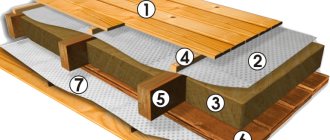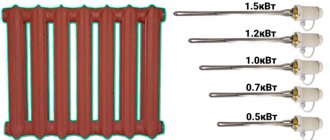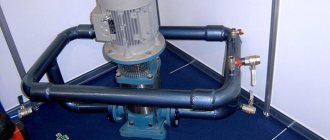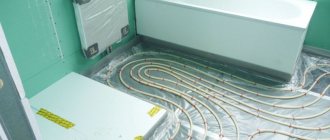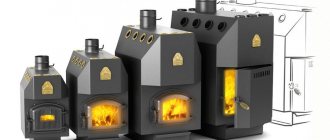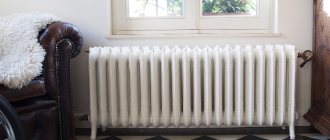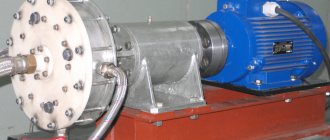Every year, the rise in heating prices forces us to look for cheaper ways to heat living space during the cold season. This especially applies to those houses and apartments that have a large square footage. One of these ways to save money is a do-it-yourself vortex heat generator. It has a lot of advantages and also allows you to save on creation. The simplicity of the design will not make it difficult to assemble even for beginners. Next, we will consider the advantages of this heating method, and also try to draw up a plan for assembling a heat generator with our own hands.
A little history
The vortex thermal generator is considered a promising and innovative development. Meanwhile, the technology is not new, since almost 100 years ago scientists were thinking about how to apply the phenomenon of cavitation.
The first operational pilot plant, the so-called “vortex tube”, was manufactured and patented by the French engineer Joseph Rank in 1934.
Rank was the first to notice that the temperature of the air at the inlet to the cyclone (air purifier) differs from the temperature of the same air stream at the outlet. However, at the initial stages of bench tests, the vortex tube was tested not for heating efficiency, but, on the contrary, for the cooling efficiency of the air stream.
The technology received new development in the 60s of the twentieth century, when Soviet scientists figured out how to improve the Ranque tube by running liquid into it instead of an air jet.
Due to the higher density of the liquid medium, compared to air, the temperature of the liquid, when passing through the vortex tube, changed more intensively. As a result, it was experimentally established that the liquid medium, passing through the improved Ranque tube, heated up abnormally quickly with an energy conversion coefficient of 100%!
Unfortunately, there was no need for cheap sources of thermal energy at that time, and the technology did not find practical application. The first operating cavitation installations designed to heat a liquid medium appeared only in the mid-90s of the twentieth century.
A series of energy crises and, as a consequence, increasing interest in alternative energy sources served as the reason for resuming work on effective converters of the energy of water jet movement into heat. As a result, today you can buy a unit with the required power and use it in most heating systems.
Device Information
A heat generator is a special device whose main purpose is to generate heat by burning fuel loaded into it.
In this case, heat is generated, which is spent on heating the coolant, which in turn directly performs the function of heating the living space. The first heat generators appeared on the market back in 1856, thanks to the invention of the British physicist Robert Bunsen, who, during a series of experiments, noticed that the heat generated during combustion could be directed in any direction.
Since then, generators have, of course, been modified and are capable of heating a much larger area than they were 250 years ago.
Operating principle
Cavitation makes it possible not to give heat to water, but to extract heat from moving water, while heating it to significant temperatures.
The design of operating samples of vortex heat generators is externally simple. We can see a massive motor, to which is connected a cylindrical snail device.
"Snail" is a modified version of Ranque's trumpet. Due to its characteristic shape, the intensity of cavitation processes in the cavity of the “snail” is much higher in comparison with a vortex tube.
In the cavity of the “snail” there is a disk activator - a disk with special perforation. When the disk rotates, the liquid medium in the “snail” is activated, due to which cavitation processes occur:
- The electric motor turns the disk activator
. The disk activator is the most important element in the design of the heat generator, and it is connected to the electric motor by means of a straight shaft or a belt drive. When the device is turned on in operating mode, the engine transmits torque to the activator; - The activator spins the liquid medium
. The activator is designed in such a way that the liquid medium, entering the cavity of the disk, swirls and acquires kinetic energy; - Conversion of mechanical energy into thermal energy
. Leaving the activator, the liquid medium loses acceleration and, as a result of sudden braking, a cavitation effect occurs. As a result, kinetic energy heats the liquid medium to + 95 ° C, and mechanical energy becomes thermal.
What is cavitation
Cavitation is a negative phenomenon that occurs due to a pressure difference in a liquid. When the water pressure drops to the value of the saturated vapor pressure, this leads to boiling. This is when the liquid partially turns into a vapor state, that is, bubbles form. When the pressure rises to a level above the saturated vapor value, the bubbles burst. As a result of the explosion, local pressure waves of up to 7 thousand bar occur. These pressure waves are called cavitation.
This also applies to the technology of insulating the roof from the inside with mineral wool. But in addition to vapor barrier, a hydrobarrier is also used.
- metal erosion;
- pitting corrosion;
- the appearance of vibrations.
The inventors of the cavitation generator claim that they were able to benefit from this negative phenomenon.
Do it yourself?
You can buy a ready-made cavitation heat generator, but it is unlikely to be possible to make this device yourself according to the drawings. At best, the result will be a noisy machine in which there will be no cavitation. In addition, before doing anything, you need to ask yourself the question: “Why?” There are many ways to heat your home:
- gas, solid fuel, electric boilers in tandem with water heating systems;
- electric heaters;
- PLEN systems;
- warm infrared floors;
- air conditioner;
- heat pumps or solar systems - if you want something exotic.
Don’t believe those who say that making cavitation heat generators with your own hands is easy and simple, spending two pennies. This is wrong. You will only waste your time and get nothing in return but disappointment.
Compared to a pitched roof, insulating the attic floor with mineral wool is a simpler process.
Here in the video below is an example of how a craftsman can make this device. Do you think it’s possible to heat anything with it?
Pump installation
Now you will need to select a water pump. Now in specialized stores you can purchase a unit of any modification and power.
What should you pay attention to?
- The pump must be centrifugal.
- Your engine will be able to spin it.
Install a pump on the frame; if you need to make more cross members, make them either from a corner or from strip iron of the same thickness as the corner. It is hardly possible to make a coupling without a lathe. Therefore, you will have to order it somewhere.
Diagram of a hydraulic vortex heat generator.
Potapov's vortex heat generator consists of a housing made in the form of a closed cylinder. At its ends there must be through holes and pipes for connection to the heating system. The secret of the design is inside the cylinder. There should be a nozzle behind the inlet hole. Its hole is selected individually for a given device, but it is desirable that it be half the size of a quarter of the diameter of the pipe body. If you do less, the pump will not be able to pass water through this hole and will begin to heat up. In addition, internal parts will begin to rapidly deteriorate due to the phenomenon of cavitation.
Tools: angle grinder or hacksaw, welding machine, electric drill, adjustable wrench.
Materials: thick metal pipe, electrodes, drills, 2 threaded pipes, couplings.
- Cut a piece of thick pipe with a diameter of 100 mm and a length of 500-600 mm. Make an external groove on it approximately 20-25 mm and half the thickness of the pipe. Cut the thread.
- Make two rings 50 mm long from the same pipe diameter. Cut an internal thread on one side of each half ring.
- Make covers from the same thickness of flat metal as the pipe and weld them on the unthreaded side of the rings.
- Make a central hole in the covers: one with the diameter of the nozzle, and the other with the diameter of the pipe. Make a chamfer on the inside of the cover, where the jet is located, with a larger diameter drill. The result should be a nozzle.
- Connect the heat generator to the system. Connect the pipe where the nozzle is located to the pump into the hole from which water is supplied under pressure. Connect the heating system input to the second pipe. Connect the outlet from the system to the pump inlet.
Water under the pressure created by the pump will pass through the nozzle of the vortex heat generator, which you make yourself. In the chamber it will begin to heat up due to intense stirring. Then feed it into the heating system. To regulate the temperature, install a ball locking device behind the nozzle. Cover it, and the vortex heat generator will circulate water inside the housing longer, which means the temperature in it will begin to rise. This is roughly how this heater works.
Vortex damper
The work of the vortex damper is based on this:
- Two rings are made, width 4-5 cm, diameter slightly smaller than the cylinder.
- 6 plates ¼ length of the generator body are cut out of thick metal. The width depends on the diameter and is selected individually.
- The plates are fixed inside the rings opposite each other.
- The damper is inserted opposite the nozzle.
Development of generators continues. To increase performance, you can experiment with the damper.
As a result of work, heat loss occurs into the atmosphere. To eliminate them, you can make thermal insulation. First it is made of metal, and then sheathed on top with any insulating material. The main thing is that it can withstand boiling temperature.
To facilitate commissioning and maintenance of the Potapov generator, you must:
- paint all metal surfaces;
- make all parts from thick metal, so the heat generator will last longer;
- During assembly, it makes sense to make several covers with different hole diameters. The optimal option for a given system is selected experimentally;
- Before connecting consumers, having looped the generator, it is necessary to check its tightness and performance.
Working principle of induction heating
An induction heater uses the energy of an electromagnetic field, which the heated object absorbs and converts into heat. To generate a magnetic field, an inductor is used, i.e. a multi-turn cylindrical coil. Passing through this inductor, an alternating electric current creates an alternating magnetic field around the coil.
A homemade inventory heater allows you to heat quickly and to very high temperatures. With the help of such devices you can not only heat water, but even melt various metals
If a heated object is placed inside or near the inductor, it will be penetrated by the flux of the magnetic induction vector, which constantly changes over time. In this case, an electric field arises, the lines of which are perpendicular to the direction of the magnetic flux and move in a closed circle. Thanks to these vortex flows, electrical energy is transformed into thermal energy and the object heats up.
Thus, the electrical energy of the inductor is transferred to the object without the use of contacts, as happens in resistance furnaces. As a result, thermal energy is spent more efficiently, and the heating rate increases noticeably. This principle is widely used in the field of metal processing: melting, forging, soldering, surfacing, etc. With no less success, a vortex induction heater can be used to heat water.
Solid fuel stoves ITProm
E
An efficient and reliable heating stove, Russia, has proven itself to work on cheap fuel in the form of wood waste from furniture production, processing of wood raw materials, slabs and other solid fuel waste, including the cheapest coal.
The
volume of the combustion space is 1/4 cubic meter, which allows loading a sufficient amount of fuel and thereby ensuring long-term combustion and maintaining heat in heated rooms.
M
The maximum area of a heated room with an average ceiling height of 4-5 m is 1500 m2, which makes it possible to provide heat to small facilities, such as car services, sawmills, small furniture production, workshops, small workshops, farms, warehouses and other commercial facilities.
The
stove's furnace is lined with refractory fireclay bricks, which have high heat capacity and are resistant to temperature changes.
IN
Cast iron grates and a steel tray are installed at the bottom of the firebox.
The oven
is painted with heat-resistant paint and the joints are sealed with fire-resistant and impact-resistant sealant.
The
heat exchanger is made of high-strength, seamless cold-rolled steel pipes designed for use in boilers and ensuring efficient heat exchange when air passes through.
T
PROMA
stoves is sufficient for heating small production areas, such as furniture production, various kinds of workshops, greenhouses, livestock facilities, etc.
N
The cheapest operation of the
PROMA
will be where there is an abundance of wood waste, non-business wood, cheap brown coal, etc.
flammable materials. Regions
with wood processing industries, rich in forest raw materials and poorly gasified are the main consumers of stoves using wood waste and coal.
ABOUT
The main advantage of these stoves compared to other solid fuel stoves is their high thermal power,
up to 150 kW
, which allows heating fairly large areas, the presence of a gas-air heat exchanger, which can significantly increase the efficiency of heating rooms and a supply fan, which provides forced air supply to the heat exchanger of the stove and beyond , through air ducts directly into heated rooms.
PROMA ovens
Perfect for heating residential and domestic premises.
The thermal power of these stoves is sufficient to heat a residential building with an area of 300 to 1500 m2 .
The supply of warm air into the premises is provided by supply air ducts. These stoves are much more efficient than the wood-burning stoves that are widely used in our country, operating on the convection principle (stoves such as Potbelly stove, Buleryan, etc.). P.).
In these furnaces, heat from metal structures, pipes, etc. is transferred to cold air, which, when heated, flows around metal surfaces and passes through convection pipes, rises. Thus, air circulation occurs and the room is gradually warmed up. PROMA stoves
are installed outside the heated room, and warm air is supplied into the room through an air duct using a fan. The room quickly warms up and there is constant air circulation.
Operating principle
There are various explanations for the reasons for the occurrence of the vortex effect of rotation in the complete absence of movement and magnetic fields.
In this case, the gas acts as a body of rotation due to its rapid movement inside the device. This operating principle differs from the generally accepted standard, where cold and hot air flow separately, because when flows are combined, according to the laws of physics, different pressures are formed, which in our case causes a vortex movement of gases.
Due to the presence of centrifugal force, the air temperature at the outlet is much higher than its inlet temperature, this allows the devices to be used both for heat generation and for effective cooling.
There is another theory of the principle of operation of the heat generator, due to the fact that both vortices rotate with the same angular velocity and direction, the internal vortex angle loses its angular momentum. The decrease in torque transfers kinetic energy to the external vortex, resulting in the formation of separated flows of hot and cold gas. This operating principle is exactly the same as the Peltier effect, in which the device uses electrical pressure (voltage) energy to move heat to one side of a dissimilar metal junction, causing the other side to cool and return the consumed energy to the source.
Advantages of a vortex heat generator
:
- Provides a significant (up to 200 º C) temperature difference between “cold” and “hot” gas, works even at low inlet pressure;
- Operates with efficiency up to 92%, does not require forced cooling;
- Converts the entire inlet flow into one cooling flow. Thanks to this, the possibility of overheating of heating systems is practically eliminated
- The energy generated in a vortex tube in a single flow is used, which contributes to the efficient heating of natural gas with minimal heat loss;
- Provides effective separation of the eddy temperature of the inlet gas at atmospheric pressure and the outlet gas at negative pressure.
Such alternative heating, at almost zero volt consumption, perfectly heats a room of 100 square meters (depending on the modification). Main disadvantages
: This is high cost and rarely used in practice.
Does it work or not?
However, a key question arises here
and the main mystery of GVTG. Namely, the effect of additional heat generation, which some manufacturers claim. In two paragraphs, the essence of the problem is this.
If we explain the heating of water in a generator
by direct conversion of work into heat - due, for example, to internal friction in a liquid, or the collapse of gas bubbles on braking devices, or dissipation of the energy of acoustic vibrations - then the law of conservation of energy is not violated. And the energy conversion coefficient will be less than unity.
But if there really is additional heat generation
, and the conversion coefficient is more than 100%, then some arsenal of alternative science will have to be involved in explaining the anomalous phenomenon: the theory of the world ether, a specific interpretation of the virial theorem, torsion fields, recrystallization of liquid water, cold thermonuclear fusion and, finally, the influence of the cosmological vector potential.
Therefore, we decided to test it in practice
How does a hydraulic vortex heat generator work, developed and manufactured under patent (No. 2301947 dated June 27, 2007) by Constanta Group LLC. Two goals were set. First: to understand whether it is possible to build an effective heat supply system for a country house based on the GVTG. Second: using available means to check whether the law of conservation of energy holds.
For testing
Konstanta Group LLC provided its GVTG with a 4 kW electric pump, suitable for heating a country house with an area of 100 m2. The generator operated in a closed cycle and in 27 minutes heated 18 liters of water from 11 to 80°C.
Based on the data received
We made a graph of temperature changes over time. One glance at it is enough to understand that there is no additional heat generation. While the water was relatively cold, the temperature increased linearly. When reaching 60°C, the heat capacity of water began to change simultaneously and the pressure in the system began to increase. The heating rate began to fall. Everything is according to the classic scenario.
Based on measurement results
We made calculations of energy conversion efficiency. And they also obtained results that were quite consistent with the traditional scientific paradigm, but very impressive. Namely: in 0.45 hours, a 4-kilowatt pump should have consumed 1.8 kWh of electrical energy. At the same time, the thermal energy of the system, according to calculations, amounted to 1.44 kWh.
Thus, it was achieved in practice
direct conversion ratio is greater than 80%. But in reality it is higher. And if we take into account that the voltage in the network is slightly lower than 220 V, and the heat was dissipated and was used to heat not only the water, but also the metal itself, then it is apparently possible to achieve the figure of 90%.
Scope of application
| Illustration | Description of application |
| Heating . Equipment that converts the mechanical energy of water movement into heat is successfully used in heating various buildings, from small private buildings to large industrial facilities. By the way, in Russia today you can already count at least ten settlements where centralized heating is provided not by traditional boiler houses, but by gravity generators. | |
| Heating running water for domestic use . The heat generator, when connected to the network, heats the water very quickly. Therefore, such equipment can be used to heat water in an autonomous water supply system, in swimming pools, bathhouses, laundries, etc. | |
| Mixing immiscible liquids . In laboratory conditions, cavitation units can be used for high-quality mixing of liquid media with different densities until a homogeneous consistency is obtained. |
Integration into the heating system of a private home
In order to use a heat generator in a heating system, it must be installed into it. How to do this correctly? In fact, there is nothing complicated about it.
In front of the generator (marked 2 in the figure) a centrifugal pump (1 in the figure) is installed, which will supply water with a pressure of up to 6 atmospheres. After the generator, an expansion tank (6 in the figure) and shut-off valves are installed.
Advantages of using cavitation heat generators
| Advantages of a vortex source of alternative energy | |
| Economical . Thanks to the efficient consumption of electricity and high efficiency, the heat generator is more economical compared to other types of heating equipment. | |
| Small dimensions compared to conventional heating equipment of similar power . A stationary generator, suitable for heating a small house, is twice as compact as a modern gas boiler. If you install a heat generator in a regular boiler room instead of a solid fuel boiler, there will be a lot of free space left. | |
| Low installation weight . Due to its light weight, even large high-power installations can be easily placed on the floor of the boiler room without building a special foundation. There are no problems at all with the location of compact modifications. | |
| Simple design . The cavitation type heat generator is so simple that there is nothing to break in it. The device has a small number of mechanically moving elements, and there are no complex electronics at all. Therefore, the likelihood of device failure, in comparison with gas or even solid fuel boilers, is minimal. | |
| There is no need for additional modifications . The heat generator can be integrated into an existing heating system. That is, there is no need to change the diameter of the pipes or their location. | |
| No need for water treatment . If a running water filter is needed for normal operation of a gas boiler, then by installing a cavitation heater, you don’t have to worry about blockages. Due to specific processes in the working chamber of the generator, blockages and scale do not appear on the walls. | |
| Equipment operation does not require constant monitoring . If solid fuel boilers need to be looked after, the cavitation heater operates in autonomous mode. The operating instructions for the device are simple - just plug in the engine and, if necessary, turn it off. | |
| Environmental friendliness . Cavitation installations do not affect the ecosystem in any way, because the only energy-consuming component is the electric motor. |
Kinds
The main task of a cavitation heat generator is the formation of gas inclusions, and the quality of heating will depend on their quantity and intensity. In modern industry, there are several types of such heat generators, differing in the principle of producing bubbles in the liquid. The most common are three types:
- Rotary heat generators - the working element rotates due to an electric drive and produces fluid turbulence;
- Tubular - change pressure due to a system of pipes through which water moves;
- Ultrasonic - the heterogeneity of the liquid in such heat generators is created due to low-frequency sound vibrations.
In addition to the above types, there is laser cavitation, but this method has not yet found industrial implementation. Now let's look at each type in more detail.
Rotary heat generator
It consists of an electric motor, the shaft of which is connected to a rotor mechanism designed to create turbulence in the liquid. A special feature of the rotor design is the sealed stator, in which heating occurs. The stator itself has a cylindrical cavity inside - a vortex chamber in which the rotor rotates. The rotor of a cavitation heat generator is a cylinder with a set of depressions on the surface; when the cylinder rotates inside the stator, these depressions create heterogeneity in the water and cause cavitation processes to occur.
Rice. 3: Rotary type generator design
The number of recesses and their geometric parameters are determined depending on the model of the vortex heat generator. For optimal heating parameters, the distance between the rotor and stator is about 1.5 mm. This design is not the only one of its kind; over the long history of modernizations and improvements, the rotor-type working element has undergone a lot of transformations.
One of the first effective models of cavitation converters was the Griggs generator, which used a disk rotor with blind holes on the surface. One of the modern analogues of disk cavitation heat generators is shown in Figure 4 below:
Rice. 4: disk heat generator
Despite the simplicity of the design, rotary-type units are quite complex to use, as they require precise calibration, reliable seals and adherence to geometric parameters during operation, which makes their operation difficult. Such cavitation heat generators are characterized by a fairly low service life - 2 - 4 years due to cavitation erosion of the housing and parts. In addition, they create a fairly large noise load during operation of the rotating element. The advantages of this model include high productivity - 25% higher than that of classic heaters.
Tubular
A static heat generator has no rotating elements. The heating process in them occurs due to the movement of water through pipes that taper in length or due to the installation of Laval nozzles. Water is supplied to the working element by a hydrodynamic pump, which creates a mechanical force of the fluid in a narrowing space, and when it passes into a wider cavity, cavitation vortices occur.
Unlike the previous model, tubular heating equipment does not make much noise and does not wear out as quickly. During installation and operation, you do not need to worry about precise balancing, and if the heating elements are destroyed, their replacement and repair will cost much less than rotary models. The disadvantages of tubular heat generators include significantly lower productivity and bulky dimensions.
Ultrasonic
This type of device has a resonator chamber tuned to a certain frequency of sound vibrations. A quartz plate is installed at its input, which produces oscillations when electrical signals are supplied. The vibration of the plate creates a wave effect inside the liquid, which reaches the walls of the resonator chamber and is reflected. During the return movement, the waves encounter direct vibrations and create hydrodynamic cavitation.
Rice. 5: Operating principle of ultrasonic heat generator
Next, the bubbles are carried away by the water flow through the narrow inlet pipes of the thermal installation. When moving into a wide area, the bubbles collapse, releasing thermal energy. Ultrasonic cavitation generators also have good performance characteristics, since they do not have rotating elements.
How to make a heat generator with your own hands
Vortex heat generators are very complex devices; in practice, you can make an automatic Potapov VTG, the circuit of which is suitable for both home and industrial work.
This is how Potapov’s mechanical heat generator (efficiency 93%) appeared, the diagram of which is shown in the figure. Despite the fact that Nikolai Petrakov was the first to receive a patent, it is Potapov’s device that enjoys particular success among home craftsmen.
This diagram shows the design of a vortex generator. Mixing pipe 1 is connected to the pressure pump by a flange, which in turn supplies liquid with a pressure of 4 to 6 atmospheres. When water enters the collector, in drawing 2, a vortex is formed and it is fed into a special vortex tube (3), which is designed so that the length is 10 times greater than the diameter. A vortex of water moves along a spiral pipe near the walls to the hot nozzle. This end ends with bottom 4, in the center of which there is a special hole for the outlet of hot water.
To control the flow, a special braking device, or water flow straightener 5, is located in front of the bottom; it consists of several rows of plates that are welded to the sleeve in the center. The sleeve is coaxial with tube 3. At the moment when water moves through the pipe to the rectifier along the walls, a countercurrent flow is formed in the axial section. Here the water moves towards fitting 6, which is embedded in the wall of the volute and the liquid supply pipe. Here the manufacturer installed another disc flow straightener 7 to control the flow of cold water. If heat comes out of the liquid, it is directed through a special bypass 8 to the hot end 9, where the water is mixed with the heated water using a mixer 5.
Directly from the hot water pipe, the liquid flows into the radiators, after which it makes a “circle” and returns to the coolant for reheating. Next, the source heats the liquid, the pump repeats the circle.
According to this theory, there are even modifications of the heat generator for mass production of low pressure. Unfortunately, the projects are only good on paper; in reality, few people use them, especially considering that the calculation is carried out using the Virial theorem, which must take into account the energy of the Sun (a non-constant value) and the centrifugal force in the pipe.
The formula is as follows:
Epot = – 2 Ekin
Where Ekin = mV2/2 is the kinetic movement of the Sun;
The mass of the planet is m, kg.
A household vortex-type heat generator for Potapov water may have the following technical characteristics:
We insulate the VTP
First of all, we put on the casing. To do this, take a sheet of aluminum or stainless steel and cut out a couple of rectangles. It is better to bend them along a pipe that has a larger diameter, so that a cylinder is eventually formed. Next we follow the instructions.
- We fasten the halves together using a special lock used to connect water pipes.
- We make a couple of covers for the casing, but do not forget that there should be holes in them for connection.
- We wrap the device with thermal insulating material.
- Place the generator in the housing and close both covers tightly.
There is another way to increase productivity, but for this you need to know how exactly Popov’s miracle device works, the efficiency of which can exceed (not proven and not explained) 100%. You and I already know how it works, so we can proceed directly to improving the generator.
Rotary heat generator
This unit is a modernized centrifugal pump, or rather its housing, which will serve as a stator. You can’t do without a working chamber and pipes.
Inside the body of our hydrodynamic design there is a flywheel as an impeller. There is a huge variety of rotary heat generator designs. The simplest among them is the disk design.
The required number of holes, which must have a certain diameter and depth, are applied to the cylindrical surface of the rotor disk. They are commonly called "Griggs cells". It is worth noting that the size and number of drilled holes will vary depending on the caliber of the rotor disk and the speed of the electric motor shaft.
The body of such a heat source is most often made in the form of a hollow cylinder. In essence, it is an ordinary pipe with welded flanges at the ends. The gap between the inside of the housing and the flywheel will be very small (approximately 1.5-2 mm).
Direct heating of water will occur precisely in this gap. Heating of the liquid is achieved due to its friction against the surface of the rotor and housing at the same time, while the flywheel disk moves at almost maximum speeds.
Cavitation (bubble formation) processes that occur in rotor cells have a great influence on the heating of the liquid.
A rotary heat generator is a modernized centrifugal pump, or rather its housing, which will serve as a stator
As a rule, the diameter of the disk in this type of heat generator is 300 mm, and the rotation speed of the hydraulic device is 3200 rpm. Depending on the size of the rotor, the rotation speed will vary.
Analyzing the design of this installation, we can conclude that its operating life is quite short. Due to the constant heating and abrasive action of water, the gap gradually expands.
What is it used for?
Let's give a small example. There are a lot of enterprises in the country that, for one reason or another, cannot afford gas heating: either there is no main line nearby, or something else. Then what remains? Heat with electricity, but the tariffs for this kind of heating can be terrifying. This is where Potapov’s miracle device comes to the rescue. When using it, the energy costs will remain the same, the efficiency, of course, too, since it still won’t be more than a hundred, but the efficiency in financial terms will be from 200% to 300%.
It turns out that the efficiency of the vortex generator is 1.2-1.5.
Description of the generator
There are different types of vortex heat generators; they are mainly distinguished by their shape. Previously, only tubular models were used; now round, asymmetrical or oval ones are actively used. It should be noted that this small device can provide completely autonomous heating, and with the right approach, also hot water supply.
A vortex and hydro-vortex heat generator is a mechanical device that separates compressed gas from hot and cold streams. The air coming out of the “hot” end can reach a temperature of 200 ° C, and from the cold end it can reach -50. It should be noted that the main advantage of such a generator is that this electrical device has no moving parts, everything is permanently fixed. Pipes are most often made of stainless alloy steel, which perfectly withstands high temperatures and external destructive factors (pressure, corrosion, shock loads).
The compressed gas is blown tangentially into the vortex chamber, after which it is accelerated to a high rotation speed. Due to the conical nozzle at the end of the outlet pipe, only the "incoming" portion of the compressed gas is allowed to flow in a given direction. The rest is forced to return to the internal vortex, which is smaller in diameter than the outer one.
Where are vortex heat generators used:
- In refrigeration units;
- To provide heating for residential buildings;
- For heating industrial premises;
It must be taken into account that the vortex gas and hydraulic generator has lower efficiency than traditional air conditioning equipment. They are widely used for low-cost spot cooling when compressed air from a local heating network is available.
Video: studying vortex heat generators
Recommendations for selection
Features of the models
The vortex cavitation heat generator exists in different designs. Today, the most common devices are water-based, that is, liquid acts as a coolant.
But it is also possible to purchase a solid fuel unit, the output of which produces a gaseous mixture of flue gas and air.
The high-performance vortex solid fuel heat generator is distinguished by the ability to burn wood with high humidity (up to 65%). Accordingly, when choosing, the purpose of the unit and the expected load are taken into account, since there are versions with different levels of thermal power. Depending on the size of the object to be served, a suitable device is selected.
In the case of solid fuel equipment, it is important to take into account the rate of fuel consumption, the size of the loading chamber and the type of fuel loading
You can select a vortex heat generator of different types according to the level of thermal power, or you can pay attention to the clause in the accompanying documentation about how much volume is allowed to be heated. The weight and overall dimensions of the equipment are also important.
Review of models of different designs
Watch a video about the product:
If you choose a solid fuel version, then in this case we consider more efficient equipment with a thermal power of 250 to 700 kW. For example, models TVV-R-250, TVV-R-500, TVV-R-700. All of them involve manual loading of fuel. But more powerful versions consume more fuel. If the 250 model consumes 120 kg/hour, then the 700 version consumes about 340 kg/hour. There are much more efficient devices with a thermal power of 2,500 kW. If you plan to use such vortex heat generators, then their price will be noticeably higher.
Recommendations for use
The smaller the overall dimensions of such equipment, the simpler its operation will be. For example, there are completely autonomous devices with automatic control. In this case, the user does not need to participate in the process. But when using some versions of solid fuel heat generators, it is impossible to do without the participation of a trained operator to load fuel, since the unit data assumes manual supply of wood.
Today, there are different versions of such equipment with fully automated execution, including preset temperature conditions. Considering that units of this kind are completely safe, both from the point of view of environmental friendliness and from the point of view of fire safety, there is no need for their constant monitoring.
Thus, to organize a heating system and hot water supply, it is not always necessary to resort to standard solutions. In practice, it turns out that when using thermal installations based on vortex heat generators, significant savings are noted in comparison with other types of heating systems.
As a result, you can get not only high-performance equipment, but also save money during its operation. Despite the rather high cost of such units, their further operation fully pays off, and you won’t have to wait too long for this, since in some cases the payback period reaches 6 months.
Price overview
Despite their relative simplicity, it is often easier to buy vortex cavitation heat generators than to assemble a homemade device yourself. Sales of new generation generators are carried out in many large cities of Russia, Ukraine, Belarus and Kazakhstan.
Let's look at the price list from open sources (mini-devices will be cheaper), how much the Mustafaev, Bolotov and Potapov generator costs:
The lowest price for a vortex energy heat generator of the brands Akoil, Vita, Graviton, Must, Euroalliance, Yusmar, NTK, in Izhevsk, for example, is about 700,000 rubles. When purchasing, be sure to check the device passport and quality certificates.
The purpose of the Potapov vortex heat generator (VTG), made by yourself, is to obtain heat only with the help of an electric motor and a pump. This device is mainly used as an economical heater.
Scheme of the vortex thermal system.
The easiest way is to make a vortex heat generator from standard parts. Any electric motor will do this. The more powerful it is, the larger volume of water it will heat to a given temperature.
Advantages and disadvantages
Among the advantages are the following indicators:
- availability;
- huge savings;
- does not overheat;
- Efficiency tends to 100% (it is extremely difficult for other types of generators to achieve such indicators);
- availability of equipment, which allows you to assemble the device no worse than the factory one.
The weaknesses of the Potapov generator are considered:
- volumetric dimensions, occupying a large area of the living area;
- high level of engine noise, which makes it extremely difficult to sleep and rest.
The generator used in industry differs from the home version only in dimensions. However, sometimes the power of a home unit is so high that there is no point in installing it in a one-room apartment, otherwise the minimum temperature when the cavitator is operating will be at least 35°C.
The video shows an interesting version of a solid fuel vortex heat generator
Insulation of a vortex engine
Before putting the device into operation, it should be insulated. This is done after constructing the casing. It is recommended to wrap the structure with thermal insulation. As a rule, high-temperature resistant material is used for these purposes. The insulation layer is attached to the device casing with wire. One of the following materials should be used as thermal insulation:
Ready thermal generator.
- glass wool;
- mineral wool;
- basalt wool.
As you can see from the list, almost any fiber insulation will do. A vortex induction heater, reviews of which can be found all over the Russian Internet, must be insulated with high quality. Otherwise, there is a risk that the device will give off more heat to the room where it is installed. Good to know: “Insulation of pipelines with mineral wool.”
What features are endowed with long-burning wood stoves in this article.
Finally, some advice should be given. First, it is recommended to paint the surface of the product. This will protect it from corrosion. Secondly, it is advisable to make all the internal elements of the device thicker. This approach will increase their wear resistance and resistance to aggressive environments. Third, it’s worth making several spare caps. They must also have holes on the plane of the required diameter in the required places. This is necessary in order to achieve a higher efficiency of the unit through selection.
Tips you should listen to
Diagram of a heat gun.
- Be sure to protect the Potapov vortex heat generator by painting all surfaces.
- During operation, its internal parts will be in a very aggressive environment caused by cavitation processes. Therefore, try to make both the body and everything that is in it from thick material. Don't skimp on hardware.
- Make several versions of lids with different inlet holes. Then it will be easier to select their diameter in order to obtain high performance.
- The same applies to the vibration damper. It can also be modified.
Build a small laboratory stand where you will test all the characteristics. To do this, do not connect consumers, but loop the pipeline to the generator. This will simplify its testing and selection of the necessary parameters. Since complex instruments for determining the efficiency factor at home can hardly be found, the following test is proposed.
Turn on the vortex heat generator and note the time when it heats the water to a certain temperature. It is better to have an electronic thermometer, it is more accurate. Then make changes to the design and run the experiment again, monitoring the temperature increase. The more the water heats up at the same time, the more preference will need to be given to the final version of the installed improvement in the design.
Ways to Improve Productivity
Heat pump diagram.
Heat loss occurs in the pump. So Potapov’s vortex heat generator in this version has a significant drawback. Therefore, it is logical to surround the submerged pump with a water jacket so that its heat is also used for useful heating.
Make the outer casing of the entire device slightly larger than the diameter of the existing pump. This can be either a finished pipe, which is desirable, or a parallelepiped made from sheet material. Its dimensions must be such that the pump, coupling and the generator itself fit inside. The thickness of the walls must withstand the pressure in the system.
To reduce heat loss, install thermal insulation around the device body. It can be protected with a casing made of tin. As an insulator, use any thermal insulation material that can withstand the boiling point of the liquid.
- Assemble a compact device consisting of a submersible pump, a connecting pipe and a heat generator that you assembled with your own hands.
- Decide on its dimensions and select a pipe of a diameter that will easily accommodate all these mechanisms.
- Make covers on one side and the other.
- Ensure the rigidity of the internal mechanisms and the ability of the pump to pump water through itself from the resulting reservoir.
- Make an inlet hole and attach the pipe to it. The pump should be located inside with its water intake as close as possible to this hole.
Weld a flange on the opposite end of the pipe. With its help the cover will be attached through a rubber gasket. To make it easier to mount the insides, make a simple, lightweight frame or skeleton. Assemble the device inside it. Check the fit and tightness of all components. Insert into the housing and close the lid.
Connect to consumers and check everything for leaks. If there are no leaks, turn on the pump. By opening and closing the valve located at the outlet of the generator, adjust the temperature.
Vortex induction heaters - operating principle
Eddy induction heaters operate on the basis of the physical law that eddy currents arising (induced) by an alternating magnetic field heat the environment.
In theory. The hollow electromagnetic core with the induction coil is protected by a shielding shell from environmental influences. When voltage is applied through the terminal box, an alternating magnetic field is created, inducing eddy currents in the core coil, which leads to heating of the metal systems of the heat exchange system. Heat enters the coolant circulation system, heating it. The temperature is set using a thermostat, and the thermostat automatically maintains the set temperature.
On practice. Vortex induction heaters are a tube wrapped in wire that is supplied with alternating current. Cold coolant enters the pipe, usually from below, but also from the side. Eddy currents, which are created by alternating current in the wires wrapped around the pipe, heat the pipe, and, consequently, heat the water.
Factory models
If the choice falls on a ready-made unit, then it is better to give preference to the products of the following leading manufacturers that have guarantees and good reviews about heat generators:
- Graviton – 500,000 rubles;
- Yusmar – from 650,000 rubles;
- Euroalliance – from 75,000 rubles.
Remember that the efficiency of a heat generator depends not only on the quality of the unit, but also on the place where it is used.
The closer to the poles of the planet, the less effective the device is, since interaction with the Sun is minimal.
The video shows a new type of vortex heat generator


